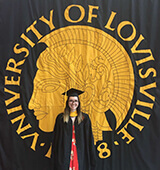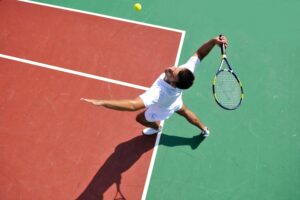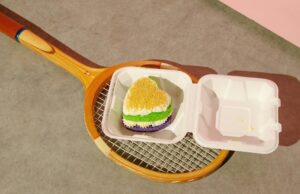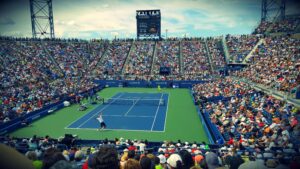The Lefty Weapon – Maximizing Potential as a Left-Handed Player
What do Martina Navratilova, Rafael Nadal, and Monica Seles all have in common? Sure, they are all multi-time Grand Slam champions, but they are also left-handed. Some of the most storied names in tennis have been lefties, but how large of an advantage is being left-handed really?
According to former world No. 95 and current WTA Tour coach, Angela Haynes, being left-handed was one of the many weapons she used to her advantage throughout her playing career. However, that does not mean being a lefty comes without difficulty.
Haynes notes that lefties must devote extra attention to their footwork because they often go down the line with their backhand side when facing right-handed opponents. “Most lefties are already shifted over to look for their forehand. We’re leaving more of our forehand side open, so we have to be much quicker than a right-hander because we’re giving up more of the court to get to our run-around,” she explained.
As a result of this phenomenon, Haynes focuses on teaching her left-handed players to open up the court by using distinct patterns. “A basic pattern that I like and teach my players is the two and one pattern, where you may go one deep, one angle, and then you shoot the ball really fast down the line. By that third ball, you already have your opponent in the alley, and you have 80-percent of the open court. Now, you can play safely and still have control of the point,” she said.
Another focal point for lefties is the serve, a strength Haynes was known for throughout her playing days. Left-handed players can serve out wide when on the ad side of the court to swing the ball to the backhand of the righty. From there, the righty is put at a disadvantage and the lefty is able to dictate.

“With the lefty serve, it’s easier to open up the court and put yourself in an offensive position early because our spin moves away from you and into your body,” said Haynes. “It chases you and moves away from you depending on what side you’re serving on. As a lefty, it’s easy to get your opponent on the run because we can create angles off our forehand. It made it easy for me to open up the other side of the court when I worked my weapon.”
Using the serve as a weapon was a technique Haynes learned as a young tennis player while playing against stronger, more experienced opponents. In fact, she remembers playing against her older brother, which quickly forced her to find unique ways to win. “Playing against my brother helped me mentally and allowed me to figure out where I needed to be more precise, accurate with my shots, and stronger,” she recalled.
Now as a coach, Haynes strives to impart the wisdom she learned as a player to her students, particularly the lefties she works with. But perhaps even more important than technical knowledge is a focus on mental toughness.
“My goal is to help my players reach their goals, but also make them very aware of the obstacles they’re going to face. I work on the tactical and emotional aspect, as well as the specialties that I had in my game, which were opening up the court with angles and my serve,” said Haynes. “I wish that when I was younger, I focused more on the things that had nothing to do with hitting a tennis ball. Once you get to the highest level, it’s not about strokes anymore. It’s about how much you can control and manage your emotions.”
To emphasize the mental aspect of the game, Haynes communicates to her players that things will not always go their way both on the court and in life. Therefore, they need to focus on what they can control on the court.
In order to accomplish this goal, Haynes put her athletes through a number of drills focused on improving footwork. One of her favorite drills involves using the ladder to work quick tempo by shooting balls at the feet, which allow lefties to focus on what they can control by putting themselves in a position of strength on the court.
Above all, Haynes urges lefties to have patience on the court. It is easy to believe points will come effortlessly as a left-handed player, but this could not be further from the truth. Left-handed players must work tirelessly to develop their gifts into a weapon on the court.
“Pattern, patience with your pattern, and also extreme racquet-head speed are vital as a left-handed player. If we don’t have the racquet-head speed, we’re not going to have the effective speed on the ball. It’s all about execution on the court,” said Haynes.








Comments: 0